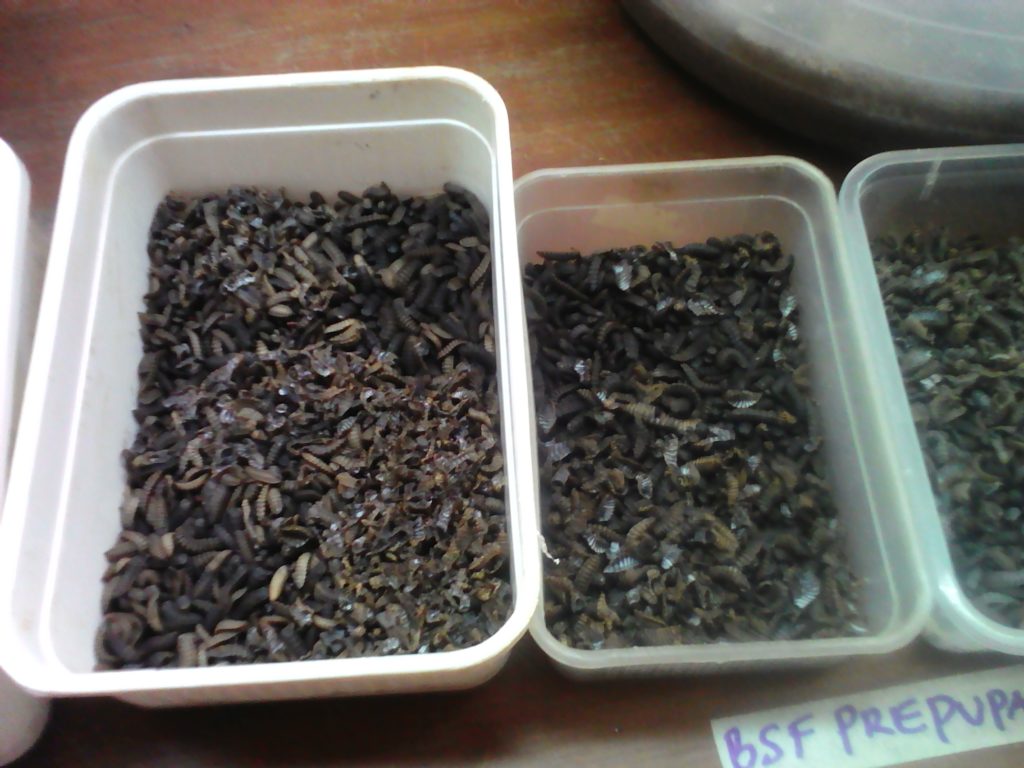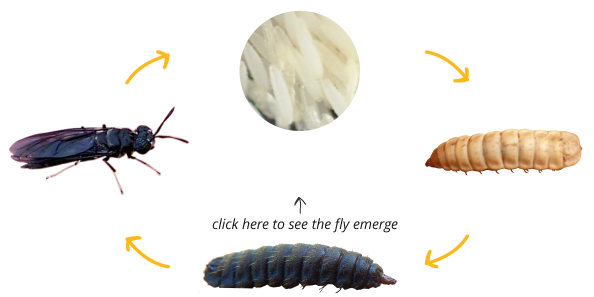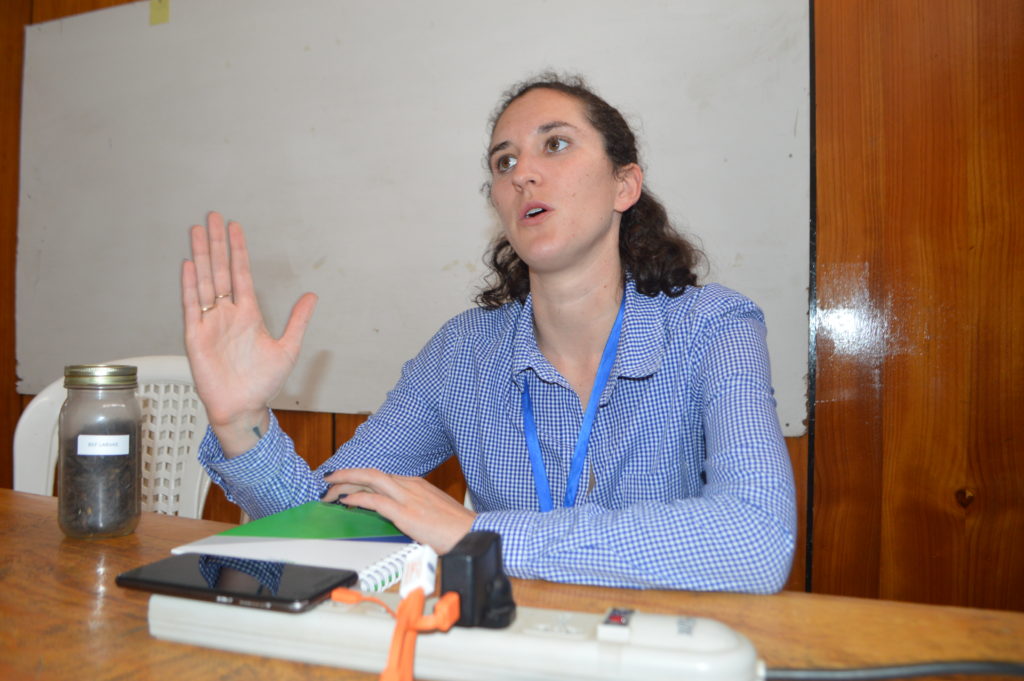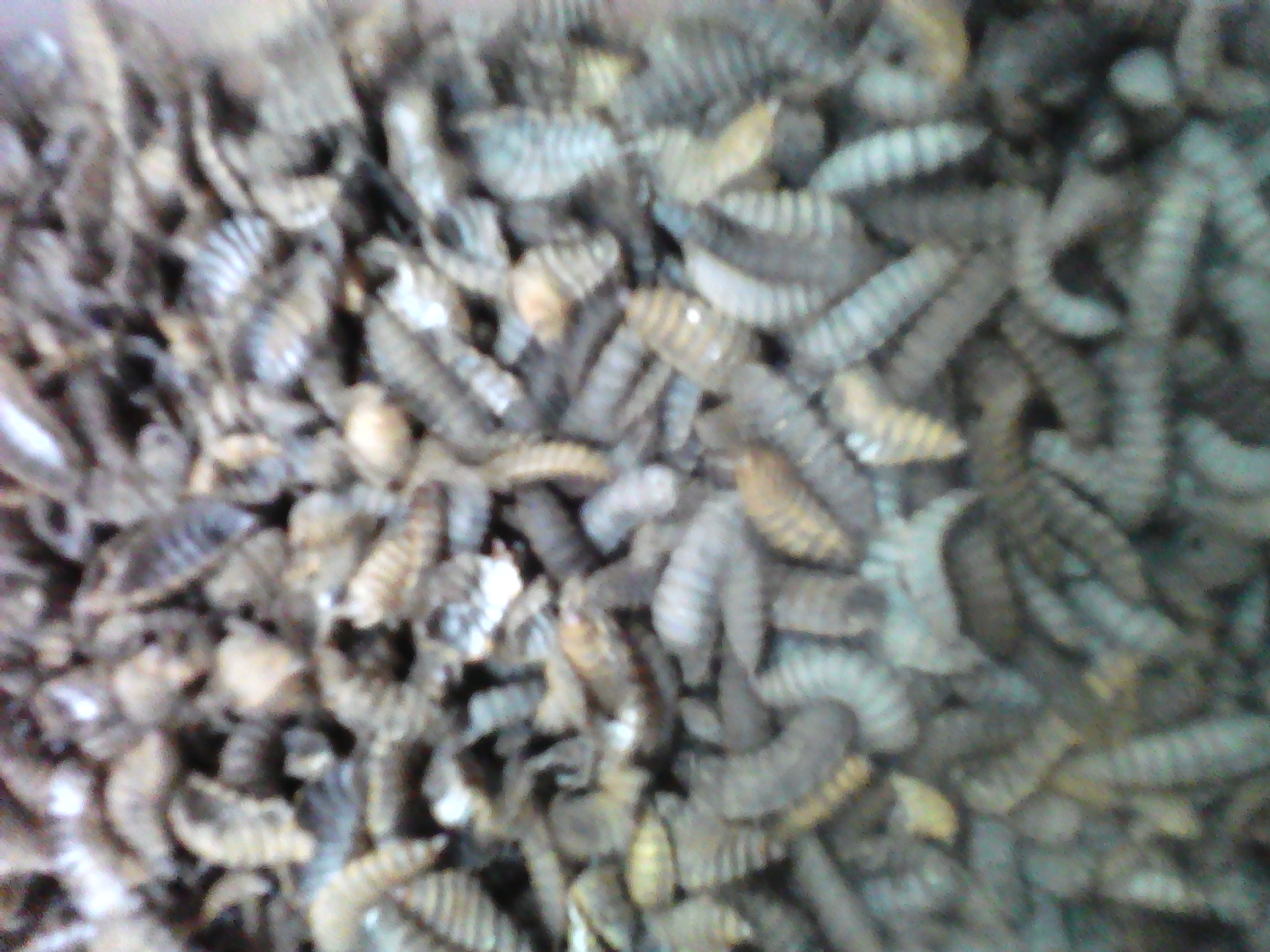By Mary Mwendwa
Nairobi, Kenya: For centuries, insects have played a critical role in the global ecology and agriculture sector. Today, however, they have become a panacea to nutritional and food shortages.
Insects add more value to the feed and food basket through their high nutrition component and as a source of income to those venturing into the innovative agriculture sector.

For decades, insects such as crickets, grasshoppers, and termites famously known as chiswa, have formed an important part of the traditional diet in the Western and Lake Victoria regions of Kenya. People in these regions consume the insects and are supplemented with free proteins that would cost them if they were to go for meat, chicken, or any other form of protein.

With the increased population that is in high demand of nutritious food and the strain from climate change which is depleting feed sources like the water bodies, the need for other sources of nutritional supply like insects is gaining credence.
Sanergy Company is helping find a solution to some of these challenges by producing high-quality protein from insects.
At Sanergy Limited in Nairobi’s Industrial area, the insect value chain has seen the company meet the nutritional needs of those in the manufacturing industry of animal feeds.
According to Medora Brown, Communications Manager, Sanergy Limited: “We are involved in waste management using container managed toilets which generate human waste which we use to make organic fertilizer for sale and we also breed the black Soldier fly which we use to process high nutritional quality feed that is sold to animal feed companies.”

“We started this work back in 2013 where we breed the black soldier colony which takes a four-week cycle, During the four-week cycle they lay eggs. We are very particular in the larvae stage, this is the stage where we harvest high protein which is between 40 -50 percent.
Sanergy Limited has witnessed the demand for the high protein feed from Black soldier flies increase with time because of the high value and constant supply they give to their customers:”
Millers who make animal feed buy our product and combine it with other supplements to come up with a high protein feed which is vital for animal growth. These companies usually repackage the product according to their specifications depending on the type of animal they are making the feed for. These insects are bred at our factory site where they are fed on the waste matter which is organic where they consume up to 200 kg per day. The beauty of this feeding process is that this kind of waste is not expensive to get, it is readily available.”
So how do they come up with the end product?
Medora explains; ”We harvest the larvae which is a product of the last stage of the insect cycle, they are then dried for one week and after that, it is packaged in 50 kg bags which are sold at 110 ksh per kg at wholesale price, the product is branded as PureProtein. Chicken and Pigs are some of the beneficiaries of this kind of feed. While we develop insect-based animal feed derived from black soldier fly larvae, fed on organic waste we have realized that the Kenyan animal feed market is growing at 7% per year, and feed millers are looking for alternatives to the proteins currently available. Feed millers appreciate the consistency and quality of our protein inputs. “
Although insect rearing has proved to be one of the best solutions to intervene in the feed sector, some challenges of behavior change in areas of toilet use still remain a hard nut to break among some community members. Some farmers are reluctant to try new feeds in the market which makes it difficult for them to access new innovative ways in the sector.
International Centre of Insect Physiology and Ecology (ICIPE) through research is working towards providing a solution to the undernourishment in the African region, because they reproduce quickly, and are valuable sources of protein, minerals, and vitamins that are essential for human development.
According to Dr.Segelet Kelemu, Director General, ICIPE,” Recent studies indicate that edible insects have an outstanding protein quality. Several essential amino acids, especially lysine, threonine, and methionine, which are limited in cereal- and legume-based diets, are also present in adequate quantities in edible insects. Compared to conventional sources, edible insects are rich in zinc. For example, 100 g of beef contains only 12.5 mg of zinc; the same amount of palm weevils contains 26.5 mg.
She adds;” Although the poultry, fish, and pig industries are the fastest growing agribusinesses in many developing countries, poor availability and high cost of feed protein additive which include soybeans, fish oil, fishmeal, seed cakes and several other grains hinder their full potential. “
Through a project jointly funded by International Research Development Centre (IDRC) and (Australian Centre for International Agricultural Research) ACIAR, Dr. Komi K.M. Fiaboe Senior Scientist, Leader, Insects for Food, Feed and Other Uses (INSEFF) Programme and Coordinator African Indigenous Vegetable IPM projects; Icipe ;
They have been breeding and rearing colonies of Crickets and Black Soldier Flies which he terms as a great project that is looking into ways to offer solutions to the feed and food sector in Africa. ”Icipe has been rearing insects for a long time but in recent times we have started breeding insects in the food and feed sector . For example, we have crickets and Black soldiers fly that we have here . We have three species for crickets, Gryllus bimaculatus De Geer and Acheta domesticus L. being the most common.”

“Insects play a very important role in the lives of people, for example in Kenya 84 percent of the population feed on chicken and this chicken need to be fed on high protein feed to make them of better nutritional value to the consumers. Insects provide up to 80 percent protein which has no comparison to other sources of protein like omena which has competition with human beings.”
Icipe’s strategic plan of 2014 pointed out how globally, insects form part of the traditional diets of at least two billion people and it is believed that more than 2000 species are consumed by humans.
Commonly consumed groups of insects include beetles, caterpillars, bees, wasps, and ants. The nutritional values of a variety of insect species have been evaluated as potential food sources for humans, poultry, or other food-producing animals and many insects have been noted as comparable to conventional livestock meat in terms of nutritional content.
Insects have been said to be a highly nutritious and healthy food source with high fat, protein, vitamin, fiber, and mineral content.
The same report continues to emphasize that Feed cost is currently prohibitive and feed unavailability and poor quality have been rated as the most important constraint hampering the growth of the livestock and fish industry in Africa.
Insects offer an important replacement for expensive protein sources from fish or plants in feeds. For example, since protein is regarded as the most expensive ingredient in the diets of poultry, feeding them with insects appears to be an economically viable option. Some of the most promising insect species for industrial production are the black soldier fly, the common housefly, the yellow mealworm, the lesser mealworm, silkworms, and several grasshopper species.

A recent African Green Revolution Forum (AGRF) through the theme” Seize the Moment “Saw many partners commit financially to support the African Agriculture sector. It came out clear that innovation, financing, and technology were critical for transformation in the agriculture sector.
Innovations like using insects for feed and food would come in handy in alleviating food security challenges that are threatening livelihoods in sub – Saharan Africa.














Good work continue
thanks Tunde
Good piece .what are the available training avenues to get firsthand knowledge and practical experience rearing of bsfm in Kenya.
Greetings Peter, you can get in touch we refer you to relevant training research centres that would be of much help.
Regards
Comments are closed.